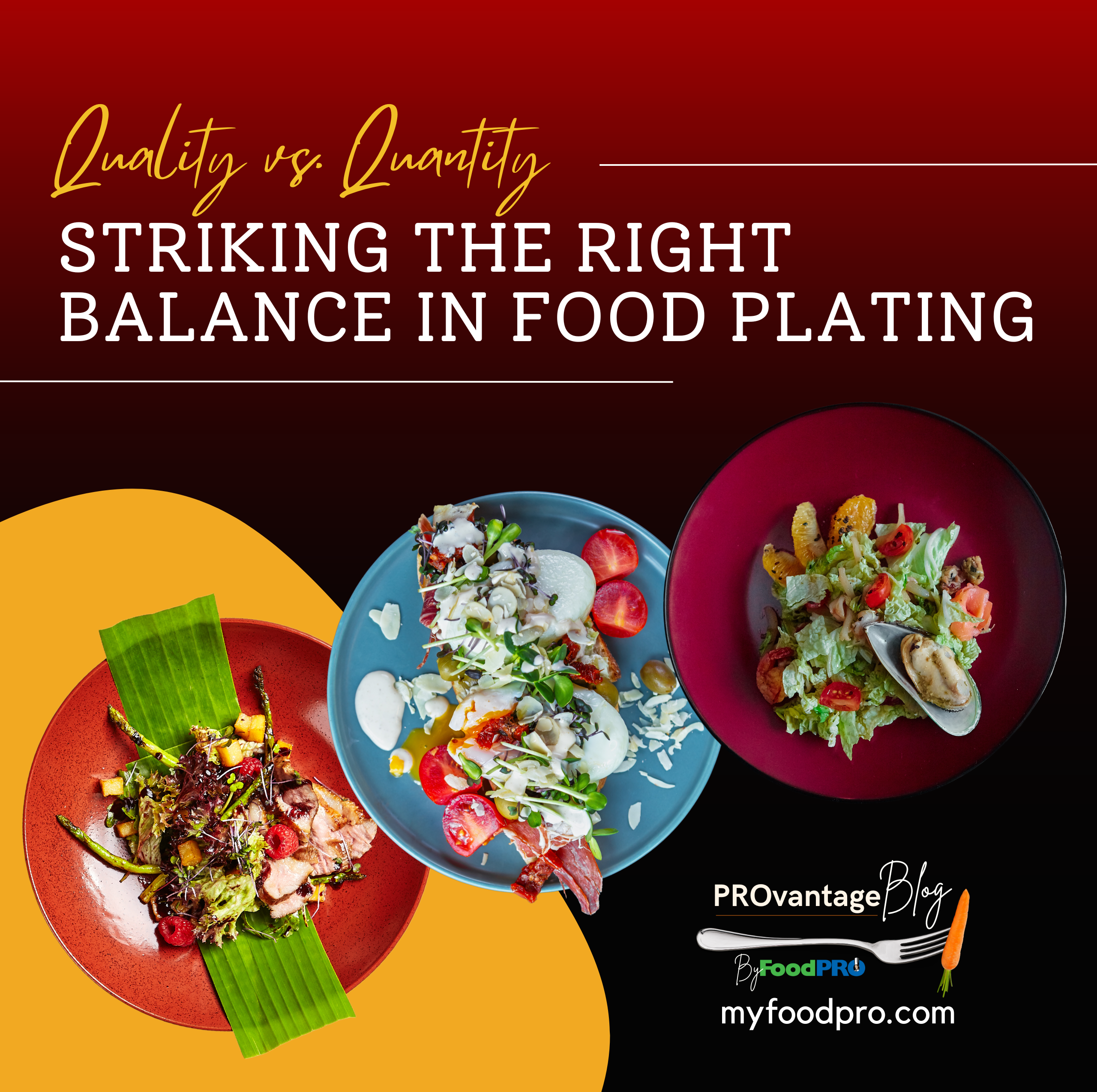Quality vs. Quantity: Striking the Right Balance in Food Plating

Welcome to a world where taste meets artistry – in the realm of food plating! In this culinary space, chefs don’t just create delicious dishes; they also transform them into captivating visual experiences. Food plating is an art form that demands a delicate balance between quality and quantity to leave a lasting impression on diners. Join us as we explore the fine line chefs walk when crafting exquisite plates that delight both the eyes and the palate.
The Art of Food Plating: Where Taste and Aesthetics Converge
In today’s culinary landscape, presentation is just as important as flavor. Imagine walking into a restaurant and being greeted with a beautifully plated dish – a masterpiece that entices you even before you take your first bite. Food plating is about appealing to the senses, creating a multisensory experience that elevates the overall dining pleasure.
Quality First: The Foundation of Food Plating
A well-executed plate starts with exceptional ingredients. Quality should always be the primary consideration when plating a dish. Fresh, seasonal, and locally sourced ingredients not only enhance the flavors but also add natural colors, textures, and aromas that elevate the visual appeal of the plate.
Chefs meticulously select the finest produce, meat, and seafood, ensuring that every element contributes to the overall taste and aesthetics. When it comes to quality, it’s not just about choosing the best ingredients, but also handling them with care and precision throughout the cooking process.
Balancing Visual Impact and Portion Size
Achieving a perfect balance between visual appeal and portion size is the crux of food plating. Too much food on the plate can overwhelm the diner, leading to a suboptimal experience. On the other hand, overly minimalistic plating may leave guests craving more.
Chefs employ various plating techniques, such as layering, stacking, and arranging, to create an artful presentation that doesn’t compromise on the portions’ satisfying nature. They strategically use negative space on the plate to draw attention to the focal point – the star of the dish.
Colors and Textures: The Palette of Plating
Vibrant colors and diverse textures add dimension and excitement to the plate. Chefs often play with contrasting hues and textures to create visually striking compositions. A splash of green herbs, a drizzle of sauce, or a sprinkle of edible flowers can elevate the dish’s aesthetic appeal, turning it into an edible masterpiece.
The Role of Plates and Utensils
The choice of plates and utensils plays a vital role in food plating. The shape, size, and color of the plate can influence how the dish is perceived. Chefs opt for plates that complement the food’s colors and textures while providing ample space for creative arrangements.
Similarly, the selection of utensils – from tweezers to squeeze bottles – allows chefs to add intricate details and precision to their plating, contributing to the overall visual finesse.
The Art of Telling a Story
Beyond the visual appeal, food plating can also tell a story. Chefs often draw inspiration from cultural influences, regional traditions, or personal experiences to infuse meaning into their creations. Each plate becomes an expression of the chef’s culinary journey, inviting diners to connect with the dish on a deeper level.
A Harmonious Fusion
In the world of food plating, quality, and quantity dance in a harmonious fusion. While quality ensures the flavors shine through, quantity determines how the plate speaks to the diner’s visual senses. Together, they create an unforgettable experience that lingers in the minds and palates of those lucky enough to partake.
Next time you savor a meticulously plated dish, take a moment to appreciate the artistry behind it – the delicate balance between quality and quantity that makes each plate a work of culinary art.
Bon appétit!
Source : FoodPRO Marketing Department



